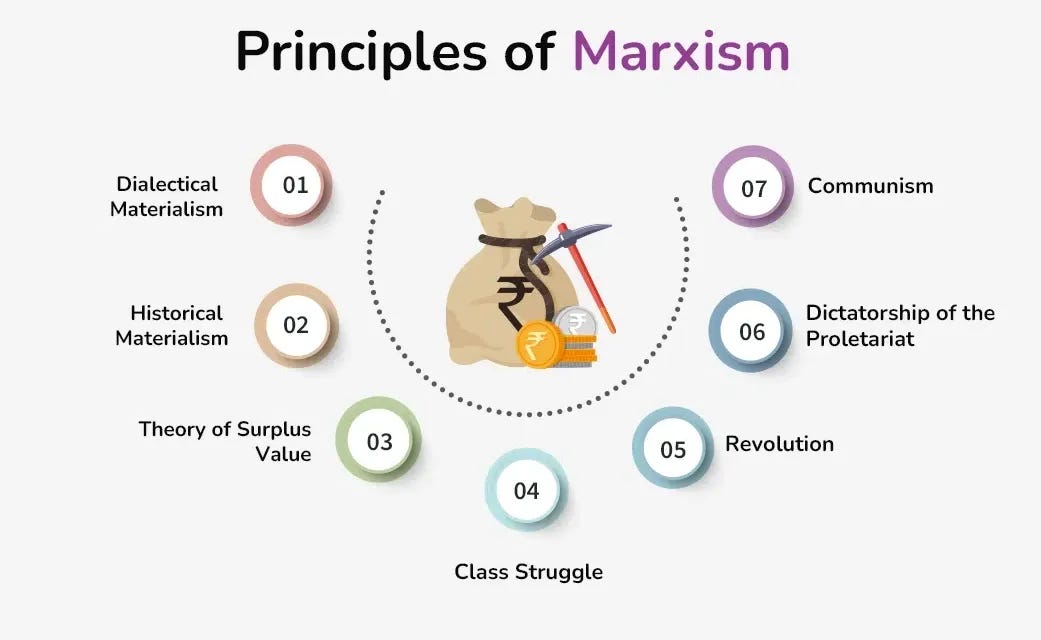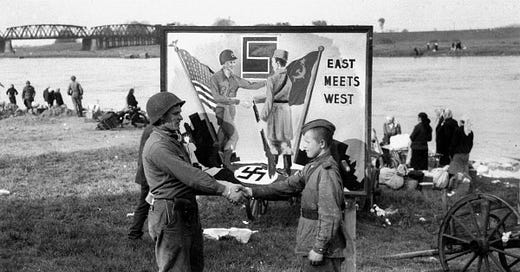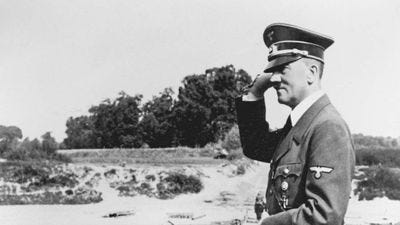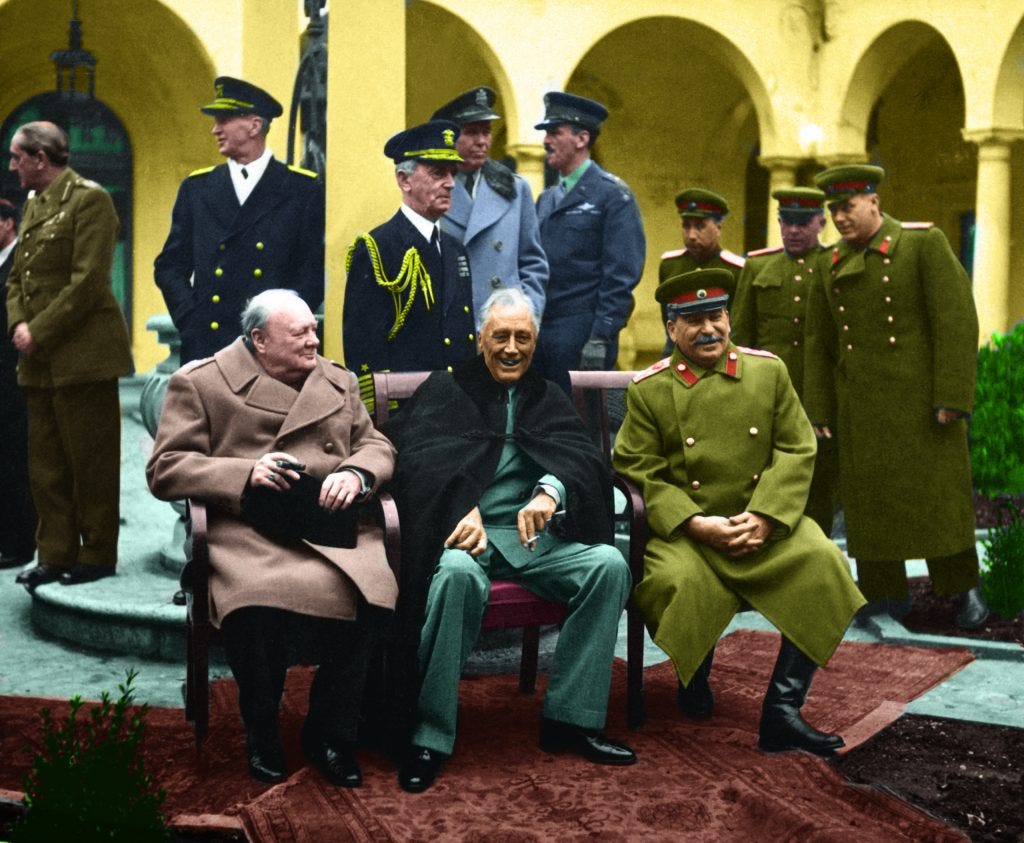This video from Mr. Spherical is well-animated and researched, giving an overview of how the post-WW2 Cold War started.
But who was to blame? Was it solely the USSR? Or the West? Or were both parties at fault?
“This town (world) ain’t big enough for the both of us.”
— A classic Western trope that perfectly captures the post‑WWII standoff between East and West.

When Nazi Germany fell in 1945, the triumphant alliance of the United States, Britain, and the Soviet Union should have ushered in a lasting peace. Instead, it quickly unravelled into the Cold War—a nearly half‑century struggle for global supremacy. Who’s to blame? Was the USSR the aggressor, was the West the provocateur, or did both sides share the guilt?
A Common Enemy, Then Inevitable Rivalry
Hitler as the unifier: During WWII, Adolf Hitler’s aggression forced capitalist democracies and communist Russia into an uneasy partnership.
Allied tensions beneath the surface: Even as they marched on Berlin, Churchill, Roosevelt, and Stalin each suspected the others of ulterior motives.
By mid‑1945, the alliance was no longer forged by shared ideals but by the necessity of defeating a single, existential threat.
Soviet Culpability: Expansion and Coercion
Eastern Europe Takeover
Promised free elections at Yalta, then installed Soviet‑style one‑party regimes in Poland, Hungary, and beyond.
Berlin Blockade (1948)
Sealed off Western access to Berlin, forcing the Allies to airlift supplies rather than capitulate.
Espionage and Nuclear Ambitions
Spies like Klaus Fuchs infiltrated the Manhattan Project, helping Moscow close the atomic gap, intensifying U.S. fears.
These actions violated wartime agreements, crushed political pluralism, and demonstrated a readiness to use force to secure a Soviet sphere.
Western Culpability: Containment and Confrontation
Operation Unthinkable (1945)
Churchill’s secret plan to attack the USSR—with re‑armed German troops—reveals that the West was already preparing for war before WWII even ended.
Atomic Monopoly and Secrecy
The U.S. developed and used nuclear weapons without consulting its Soviet ally, then delayed sharing information long after the war.
Economic and Military Alliances
The Marshall Plan excluded Eastern Europe, while NATO’s formation codified a military bloc against the USSR.
Although often framed as defensive, these policies fueled Soviet paranoia and confirmed Stalin’s worst fears of encirclement.
A Clash of Ideologies

Capitalism vs. Communism: Two worldviews so fundamentally opposed that coexistence seemed impossible.
Capitalism: Private ownership, free markets, liberal democracy.
Communism: State planning, one‑party rule, collectivist ideology.
Mutual existential threat: Each side saw the other not merely as a rival power, but as a mortal danger to its way of life.
The Cold War’s True Beginning
Distrust in wartime: From Soviet espionage to Western invasion planning, both sides prepared for conflict before World War II ended.
Zero‑sum mindset: Every move—economic aid, military alliance, territorial control—was interpreted as an offensive play in a global game.
Rather than a sudden betrayal, the Cold War was the logical fallout of an alliance held together only by the urgent need to defeat Hitler.
Conclusion: Shared Responsibility
The USSR was at fault for imposing authoritarian regimes, violating Yalta, and aggressively blocking Berlin.
The West was at fault for plotting Operation Unthinkable, wielding the atomic monopoly, and excluding the USSR from postwar planning.
Both sides at fault: Mutual distrust, ideologically driven policies, and a security dilemma made conflict all but inevitable.
Like two gunslingers in a dusty frontier town, neither could tolerate the other’s presence—one had to win, or both would be destroyed. The real tragedy of the Cold War lies not in a single act of provocation, but in the fact that two superpowers, having dismantled one tyrant, swiftly turned their sights on each other.





